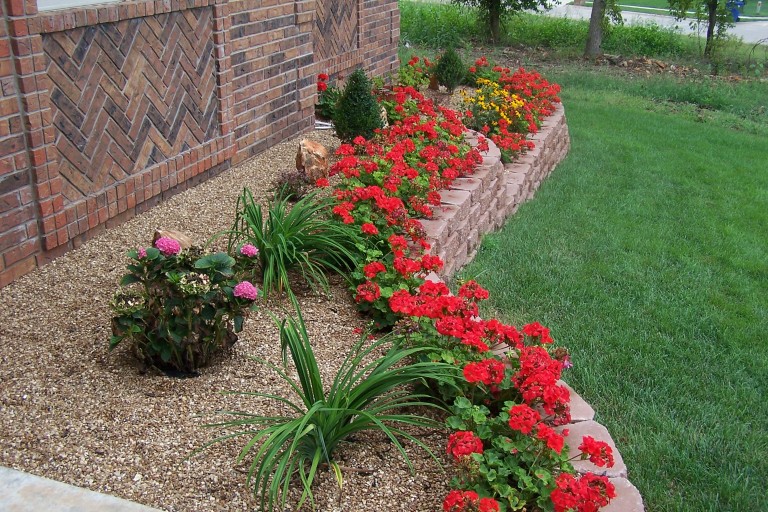With a small piece of land, the novice gardener or even a brown thumb can sculpt out a couple of patches of interesting greenery.
The first thing to do when considering planting even the tiniest plot is budget – not just money budget, but time budget. How big of a project can you take on, either financially or within your schedule? Start small on both fronts, and buy your plants, bulbs, or seeds based on the season in which you have time to begin. Time on the front end, to find and buy the plants, as well as planting and maintenance time, should all be factored into your selection process. Even 15 minutes and $1.00, with no time for maintaining, weeding, and watering will get you four packs of wildflower and other seeds that you can scatter and leave to nature to transform your property.
Easy-grows like wildflowers are a good choice to plant when you haven’t figured out yet what you want long-term. Lettuce is another good garden-starter in early spring. While it can’t handle much heat, it grows quickly, and you’ll see a return in the form of fresh baby green salads in just a matter of two or three weeks. Another wise choice for temporary plants that grow easily and quickly and will cover an area with lush vegetation in little time is sweet potatoes. The plants themselves are hearty, dark green, and quite attractive. By the time you figure out what you want in the long run, you’ll have a harvest of tubers. Sweet potato plants pull out easily at harvest time and can be composted. Like small shrubs, they’re good if you’re prone to changing your mind frequently. In gardening, change is a good thing. Annuals, or plants that live for only one growing season, can always be rotated from year to year to see what works best. Even some perennials, or plants that last for more than two growing seasons, can be moved relatively easily, as long as their root structure doesn’t go too deep.
After you’ve got some easy filler-plants or flowers in, you can consider longer-term issues like drainage, water source, and sunlight. By simply reading the recommended sunlight, water, and climate on packaging, and/or speaking with nursery staff, you can choose the best spots for planting. If your existing soil is claylike or full of giant rocks, you’ll have to spend time to loosen it with a hoe or a tiller, depending on how large the area is. You can also add a layer of rich store-bought topsoil to make your job a little easier.
If you’re going to attempt amateur landscaping yourself, the key is to have fun with it. Ask yourself what you like. Group things according to scale, color, and light requirements, and play around with the variables as if you are creating a three dimensional collage.
For more ideas and tips on landscaping for beginners, visit Better Homes and Gardens at bhg.com, or simply make a trip to your local greenhouse, botanical garden, or plant shop.
By Eugénie Bisulco
eugenie@theforumnewsgroup.com

